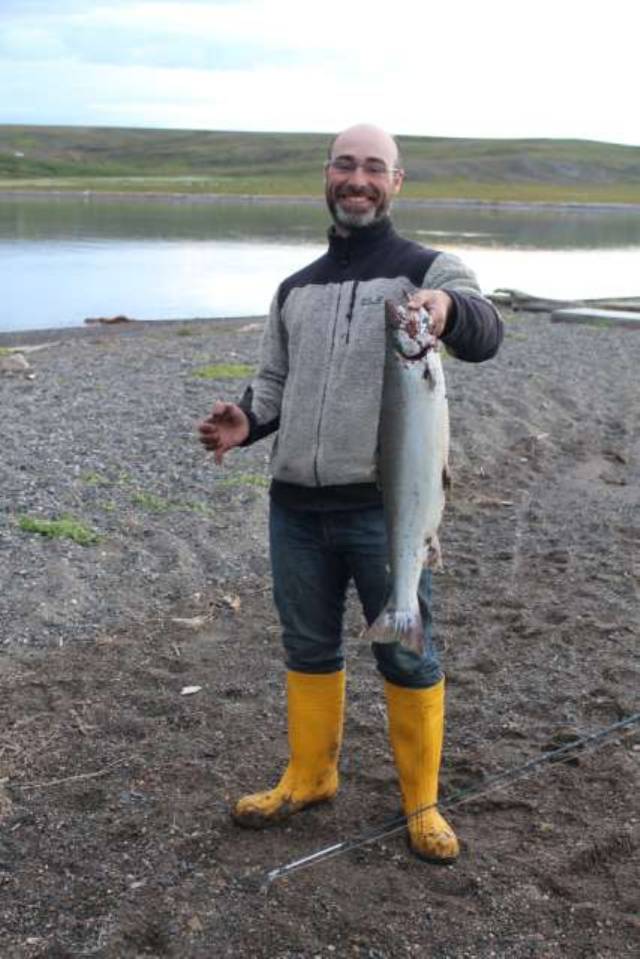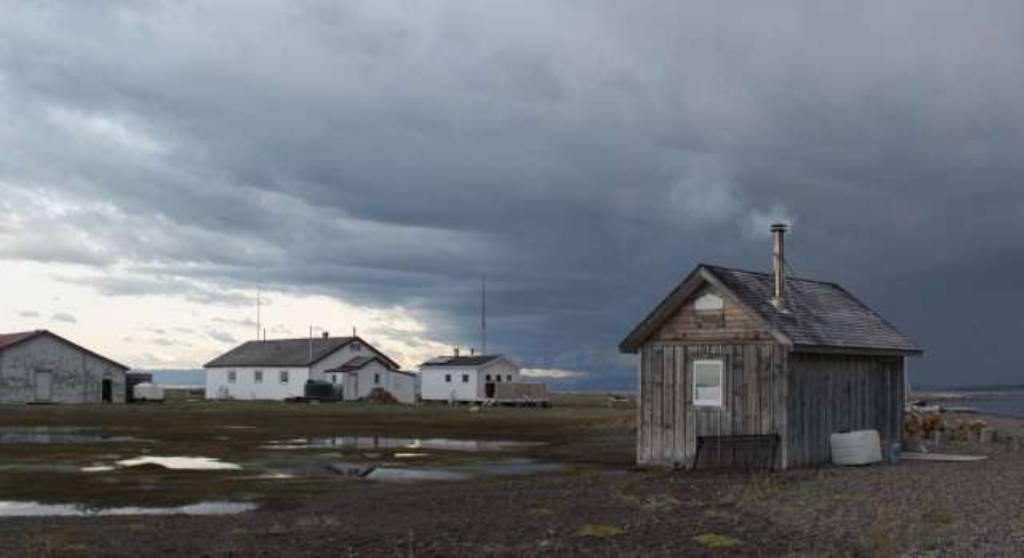We are aware that weather conditions may change rapidly in the Arctic. However, even the experienced polar scientists were fascinated by the fast changes we observed yesterday in the evening, as the signs of the upcoming storm covered the sky towards the northwest. The formation of dark, water-loaded clouds is mesmerizing; air masses are shifting and transform a formerly light blue sky into a dramatic art piece. We cannot hesitate to interrupt work and secure the campsite to take pictures. Cedric even took out his rod and managed to catch the first fish of our expedition, a large Arctic Char.

However, the storm did not surprise us. We’ve observed the weather forecast for many days and developed a safety strategy together with the Yukon Park Rangers. This was predicted to be a serious storm, even though the maximum wind speed is not as high as we first thought: ‘only’ 90 km/h instead of 105 km/h. Nonetheless, we secured all our belongings in the camp, stored equipment and gear in safe buildings, took down scientific devices and double checked every storing facility. We haven’t started a moment too early; within the blink of an eye, the calm wind conditions transformed into stormy winds and the rain started. The last generator was stored, and each group member escaped the first drops of rain.

The weather conditions force us to stay in the camp due to safety reasons. We planned to use this day to perform essential, time-consuming analyses in the laboratory. Taylor received help by Cedric and Maarten to extract DNA sequences over 60 samples from previous transects whilst Konstantin filtered 45 sea water samples that were taken in the past two days to calculate the concentration of suspended particulate matter in surface waters of Arctic nearshore environments. In the meantime, Saskia extracted data from her electrical resistivity tomography (ERT) measurements yesterday and prepared her next measurements to go to the thaw slumps again as soon as the weather allows. Michael and Sebastian checked the function and usage of several sampling devices that are needed to sample buried ground ice and permafrost sediments in the same thaw slump where Saskia is working.
In our short breaks, we enjoy hot drinks a little bit more than usual, and check the weather forecast frequently. We hope to continue working outside the camp from tomorrow afternoon on. Even though we’ve made great progress in the past week, there’s still a lot to do to fulfill our ambitious goals.


